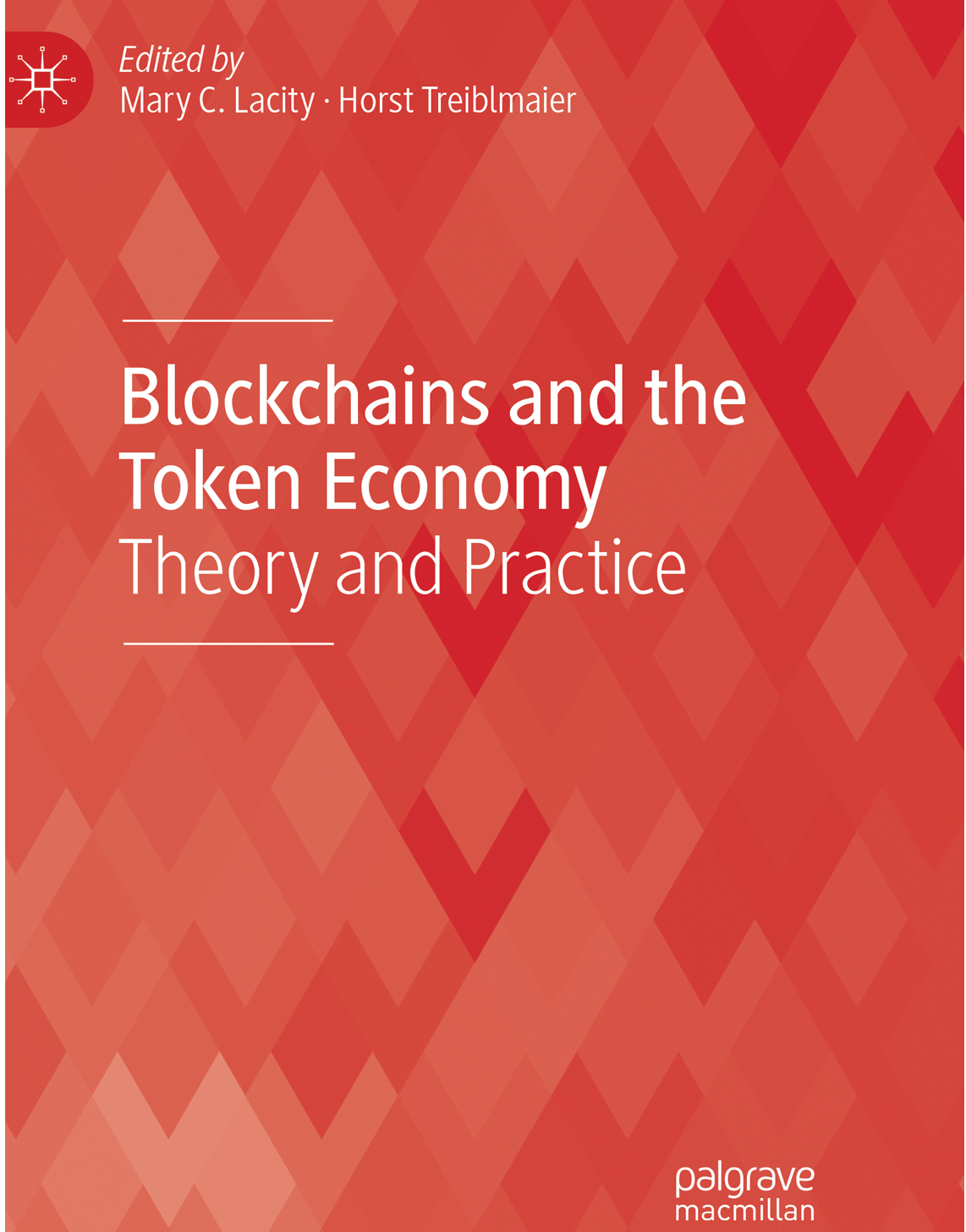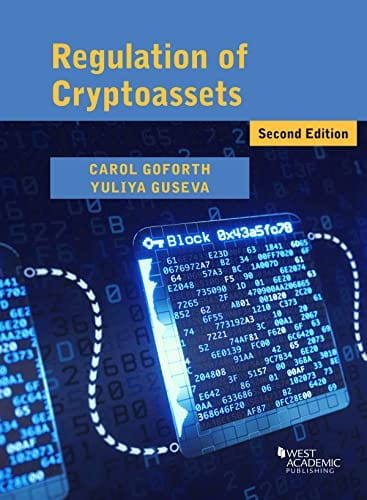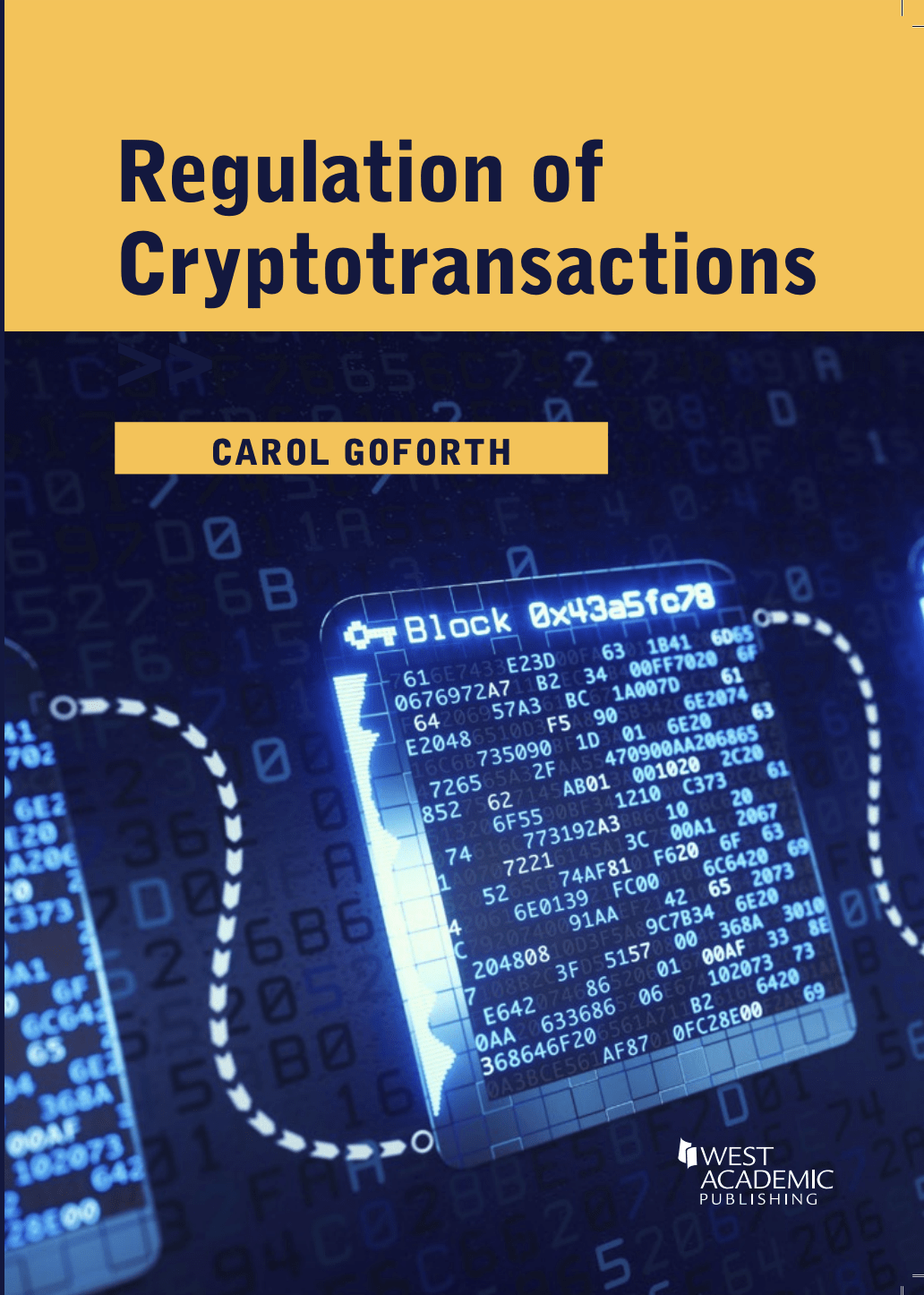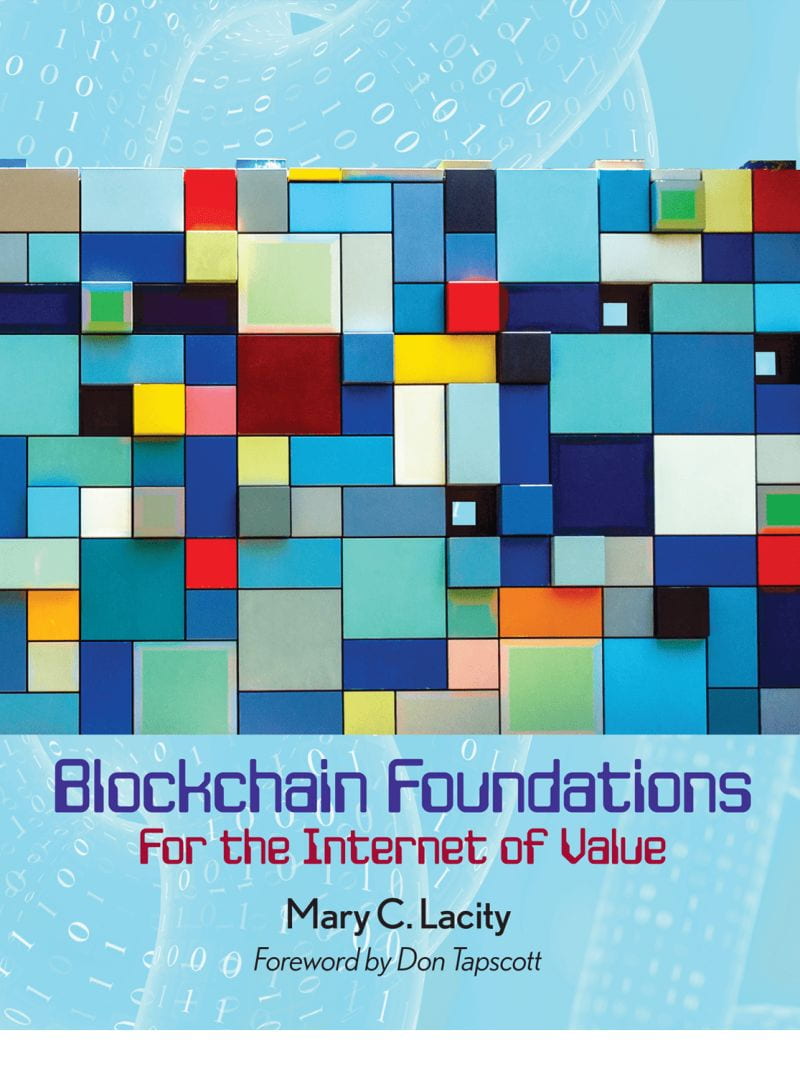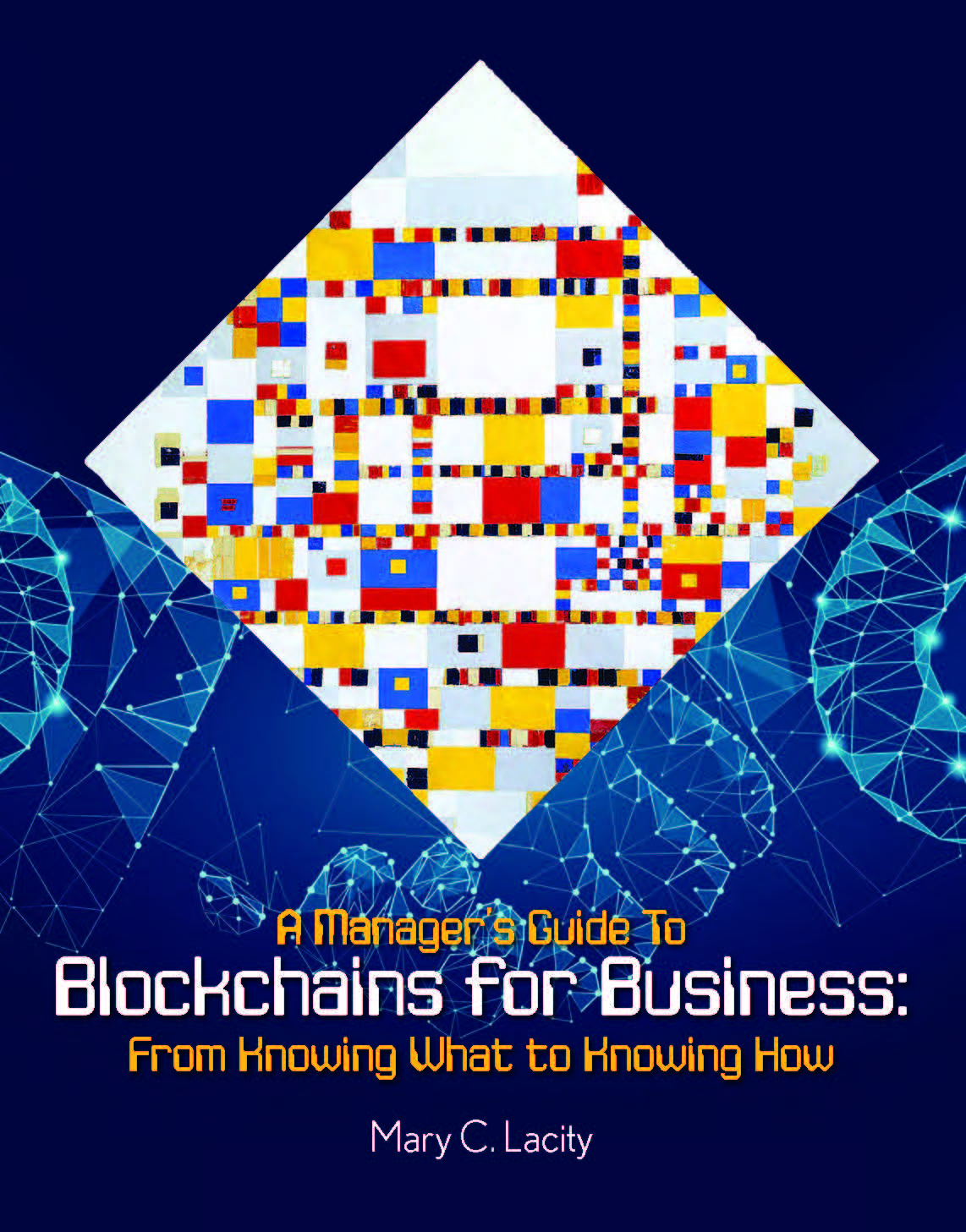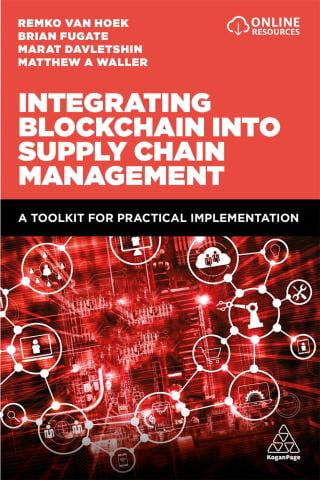Research
Follow the latest Blockchain research by members of our Academic Faculty Network.
Blockchain Research Series
The research series is one way the Blockchain Center of Excellence is working towards achieving the vision of being a premier academic leader of blockchain application research and education. Our resources are published below in three different formats: briefings, case studies and whitepapers.
Research Briefings
Research briefings are short articles aimed to quickly disseminate key ideas related to blockchain topics.
Case Studies
Creating a viable ecosystem, agreeing on the business models, systemic governance and standards, as well as complying with regulations can be as challenging as building the technology. These case studies examine how a single blockchain application was conceived, designed and deployed under such complex circumstances.
White Papers
White papers are in-depth investigations of blockchain-related issues. Our team writes for a wide-range of audiences, including:
- Senior Executives looking for the answer to “So what?”
- IT and Innovation Directors needing deeper insights
- Students at both the graduate and undergraduate levels
White papers are available to the public following a 60 day sequester period with our Executive Advisor Board member firms. Hashes of each white paper are stored on the Bitcoin blockchain using a service by poex.io.
Research Links
“IT’s a Matter of Trust“
BCoE White Paper 2023 by Mary C. Lacity, Sebastian W. Schuetz, Le Kuai, and Zachary R. Steelman
Trust is one of the most important constructs for understanding the adoption of information technologies (IT). In this chapter, we provide a review and analysis of the research on the construct of human trust in IT artifacts and in the entities that source, operate, and govern IT. We first take a broad view of the trust construct from multiple academic disciplines and from the Linux Foundation’s Trust over IP (ToIP) white papers to gain a deeper appreciation of trust’s complexities. We identified 13 assumptions about the nature of trust:
1. Trust is psychological.
2. Trust is social.
3. Trust is contextual.
4. Trust involves expectations.
5. Trust involves vulnerability and dependency.
6. Trust involves promises, commitments, and obligations.
7. Trust involves risks.
8. Trust is multidimensional.
9. Trust is limited.
10. Trust is dynamic.
11. Trust may be reciprocal, mutual, or asymmetrical.
12. Trust is transitive, to a degree.
13. Trust and distrust are different constructs.
Then, we analyze and discuss findings from how information systems (IS) scholars have defined, assessed, and measured trust within 214 articles published in the AIS Senior Scholars’ Basket of Eight journals. Our review found that IS scholars have done commendable work on the construct of trust, particularly as it relates to Assumption #3—trust is contextual. IS scholars have examined trust in the contexts of blogging, corporate social responsibility, crowdfunding, e-commerce, e-government, e-healthcare, e-trading, e-voting, electronic auctions, electronic marketplaces, enterprise systems, identity management, Internet use, interorganizational systems, mobile applications, offshoring, open-source software, outsourcing, phishing, privacy, recommendation agents, social networks, virtual teams, virtual worlds, and websites. As a group, IS scholars have also deeply examined the multi-dimensional aspect of trust (Assumption #8) by examining different types of trust, including affective trust, cognitive trust, institutional trust, instrumental trust, intrinsic trust, knowledge-based trust, relational trust, swift trust, disposition to trust, trusting beliefs, and more. IS scholars have also done admirable work on Assumption #10—trust is dynamic. The body of work includes many qualitative papers that examined trust as a process. While the IS community can be proud of its cumulative tradition on the construct of trust, there is still interesting work to be done. We encourage more research on trust in emerging technologies, in bi-directional relationships, on the limits of transitive trust, and on the construct of distrust.
“Evolution of the Metaverse”
BCoE 2023-6 by Mary Lacity, Jeffrey K. Mullins, Le Kuai.
Technological advances are enabling more immersive experiences in virtual worlds and digitally augmented experiences in the physical world. These experiences are increasingly associated with the metaverse, a term rooted in science fiction originally referring to a dystopian digital reality.
The recent announcements by Meta (formerly Facebook) and Apple promise to transform work and help us overcome great obstacles, prompting organizations to consider how virtual and augmented reality can enable next-generation workplace and customer experiences. Our research explores the potential promise and peril of emergent metaverses to business and society. In this paper, published in MIS Quarterly Executive, we tackle the questions:
- What is the metaverse and how does it differ from the virtual worlds of nearly 20 years ago?
- What will the projected business value be and what are its use cases?
- How might, and should, it be governed?
- What are the potential pitfalls?
- What can we expect from follow-up technologies?
- Is there a dystopian urban landscape lurking at the end of the metaverse rainbow?
“What type of Metaverse will we create?”
BCoE 2022-10 by Mary Lacity, Jeffery K. Mullins and Le Kuai.
Our primary aims in this white paper are to educate readers on current views of the metaverse, its stage of maturity, identify which businesses are already exploring metaverse, and where it could be headed. We argue that a decentralized metaverse promotes greater privacy, security, equity, and inclusion, but the lack of economic incentives and business models for decentralized applications could result in continued centralization of ownership, control, and value if consumers and organizations don’t choose a different path. The future of the internet is at stake, and everyone—consumers, creators, businesses, governments, and NGOs—should have a voice in shaping that future.
“Implementing Self-Sovereign Identity (SSI) for a digital staff passport at UK National Health Service (NHS)”
BCoE 2022-01 by Mary Lacity and Erran Carmel
Self-sovereign identity (SSI) is an idea, a movement, and a decentralized approach for establishing trust online. Many standards-making bodies, open-source working groups, and organizations have been working on SSI and verifiable credentials for years. Although production-ready solutions remain in the developmental stage, business executives, professionals, and students need to start learning about what’s ahead. Business practitioners want to know what is unique about SSI. Is there anything idiosyncratic about managing an SSI project compared to other digital projects? How can we apply SSI to deliver business value? We help to answer those questions by explaining SSI through a case study at UK National Health Service (NHS). NHS developed a digital staff passport to verify health professionals’ qualifications and credentials so that healthcare staff could be moved around quickly during COVID-19. While SSI provides some unique capabilities, it does not require unique project-management practices. Like all digital projects, the aim was to build capabilities and design for interoperability to avoid vendor lock-in. Building on its early success, NHS intends to expand the application to enable its strategic people plan.
“The Emergence of Web 3.0: Tokenization and the Internet of Value”
BCoE 2021-02 by Chen Zur and Mary Lacity
Since the emergence of blockchain technology in 2009, with Satoshi Nakamoto’s launch of
Bitcoin as its first real-world application, there have been many claims that this technology will
“change the world”. At the heart of this claim lies the notion of blockchain technology’s ability
to replace the current monetary system by using the public Internet to manage the exchange of
value in a peer-to-peer manner rather than through trusted middleman on private networks. In
this paper, we discuss the basis for this claim and the basic tools and capabilities, including
tokens and smart contracts, that make the emergence of an “Internet of Value” possible. We
discuss where we are, what has already been accomplished, and the road ahead.
“Requiem for reconciliations: DL Freight, a blockchain-enabled solution by Walmart Canada and DLT Labs”
BCoE 2021-01 by Mary Lacity and Remko Van Hoek
Supply chain partners across many industries are often in disputes over the
accuracy of invoices. Shippers are suspicious of unexpected charges that appear on
invoices; carriers dislike fighting to get paid on time. Such disputes are largely caused by
the lack of data transparency among supply chain partners. When each party maintains
its own internal systems of record, the records often do not match, prompting expensive
reconciliation processes on both sides.
Blockchains offer a different approach based on a shared-information system,
with records distributed to authorized trading partners. Blockchains, however, do not
require supply chain partners to abandon their existing technologies. When blockchain
applications are connected to each partner’s internal systems of records, it can enable
what is known as “triple-entry bookkeeping”. Supply chain partners get the benefits of
transparency and agreement over events and charges, with minimal changes required to
their internal systems of record.
In this BCoE case study, we explore how Walmart Canada and DLT Labs
developed DL Freight, a blockchain-enabled solution for freight invoicing and payment
processes that reduced disputes from 70 percent to less than 2 percent. We discuss the
development of the solution, present before-and-after pictures of the processes,
document the business value delivered, offer lessons for other enterprises considering
similar solutions, and compare blockchain technology to alternative technologies that
can enhance supply chain capability.
“Authenticating real news with ANSAcheck, a blockchain-enabled solution developed by ANSA and EY”
BCoE 2020-02 by Mary Lacity and Dan Conway
Digital platforms like social media have amplified the creation and distribution of fake news. Fake news threatens not only our trust in the press, but has wide-ranging negative effects on politics, business, health, and society. We present an example of authenticating real news with a solution called ANSAcheck, developed by Agenzia Nazionale Stampa Associata (ANSA)—Italy’s top news wire service—and Ernst & Young (EY)—one of the world’s largest professional services firms. ANSAcheck’s underlying blockchain technology provides verifiable authentication as to source, updates, and reposting of legitimate news stories. This Blockchain Center of Excellence (BCoE) case study provides an overview of fake news, covers the development of the ANSAcheck solution thus far, and offers general lessons for this and other types of ecosystem solutions.
“2020 State of Enterprise Blockchain Services”
by HfS Research
“The BCoE is pleased to share this HfS Research Report, The HFS Top 10 Enterprise Blockchain Services 20202. HfS Research is a top global consulting firm that focuses on innovations that impact enterprises. In this report, the authors investigate 4,200 blockchain engagements across industries and around the globe. This comprehensive and insightful report provides an in-depth look at the business impact, popular use cases, and the public-vs. private blockchain race. The report identified two BCoE Executive Advisory Board Members, IBM and EY, among the top three blockchain enterprise service providers based on execution, innovation, and customer delivery. As a founding member of HfS’s FORA (the Future of Operations in the Robotic Age) Leadership Council, I am proud to share leading research with the BCoE community.” – Professor Mary Lacity, Director of BCoE
“Reinventing Talent Acquisition: The SmartResume® Solution”
BCoE 2020-01 by Mary Lacity, Director of the Blockchain Center of Excellence
In the BCoE’s first published Case Study, we explore how talent acquisition remains a process wrought with fraudulent claims by applicants, selection bias by hiring firms, and data privacy violations by platforms and recruiters. The SmartResume solution, developed by iDatafy, establishes a trusted platform for talent acquisition based on verified credentials that are secured with blockchain technology
“An overview of the ‘Internet of Value’, powered by blockchain technologies”
BCoE 2019-030 by Mary Lacity, Director of the Blockchain Center of Excellence
The Blockchain Center of Excellence (BCoE) at the University of Arkansas wrote this research briefing to explain the Internet of Value and the blockchain foundations needed to build it. We provide a realistic impression of the state of enterprise blockchain solutions and what executives need to consider now.
“Blockchain Governance Models: Insights for Enterprises”
BCoE 2019-020 by Mary Lacity, Zach Steelman, and Paul Cronan
In this white paper, we answer the research question: “What are emerging models and practices for shared governance over blockchains?” Beyond the founders, potential enterprise adopters need assurances that governance will be truly shared; that there are verifiable controls to prevent the rise of powerful alliances to prevent their self-interests from superseding the interests of all ecosystem participants. We provide several examples of how governance can evolve as solutions scale.
Proof-of-existence on the Bitcoin Network:
Hash of the white paper is stored in the script of this transaction: 59bc2a40229bd12d8ca75dc0aecb37ce7249a607d6d0dee711fee303170eda8d in Block 604095
“Towards Blockchain 3.0 Interoperability: Business and Technical Considerations”
BCoE 2019-01O by Mary Lacity, Zach Steelman, and Paul Cronan
This focus of this white paper is to help bridge the disconnect about general blockchain interoperability by highlighting the top-down business and bottom-up technical considerations, as well as emerging solutions. We want to answer the research question: “How can enterprises approach interoperability when the technology is immature and rapidly changing?” As enterprises explore blockchain solutions, they are increasingly concerned about the proliferation of blockchains, how blockchain applications will connect with each other and with legacy systems, and the fear of getting locked into solutions too early.
Proof-of-existence on the Bitcoin Network:
Transaction ID: 1d0b072c3533757556b12ddf59fc4a66a3e8d6de274904cbcd39f82e609c017e
Hash of the white paper is stored in the script of this transaction: 84CCFABEEEAEA368213073997D7661F6A55C9AA20373B9269456EAF22DC1E439
Books on Blockchain
A Blockchain and the Token Economy: Theory and Practice
In this book, leading practitioners and academics provide comprehensive coverage and novel insights into blockchains and the token economy. Real world case studies from a wide range of industries provide practical examples of blockchain-based tokens for real estate, logistics, insurance, recruitment, collectibles, reservations, metaverses, and more. The cases show how tokens provide an innovative way to create and transfer value without relying on traditional intermediaries. Readers will better understand the business and social benefits of tokenization, but also its challenges.
Blockchain Fundamentals for WEB 3.0
Our book explains the movement to establish online trust through the decentralization of value, identity, and data ownership. This movement is part of ‘Web 3.0’, the idea that individuals rather than institutions will control and benefit from online social and economic activities. Blockchain technologies are the digital infrastructure for Web 3.0. While there are many books on blockchains, crypto, and digital assets, we focus on blockchain applications for Web 3.0. Our target audience is students, professionals, and managers who want to learn about the overall Web 3.0 landscape—the investments, the size of markets, major players, and the global reach—as well as the economic and social value of applications.
Regulation of Cryptoassets
The book covers recent administrative and judicial decisions addressing crypto-related issues and involving cryptoasset and fintech firms, as well as a range of other materials such as pleadings, briefs, agency guidelines and proposed regulations, and academic commentary. The book examines a broad range of regulatory regimes, and although it focuses primarily on U.S. federal law, it also introduces applicable state law, international law, and European Union law.
Regulation of Cryptotransactions
The materials in this book are designed to look at cryptoassets and the expanding world of cryptotransactions to examine how the regulatory regime surrounding these interests is developing. Because the regulatory reaction to crypto is still in the early stages, it is not really possible to create a traditional casebook that focuses only on settled judicial opinions to illustrate relevant legal issues and rules. These materials therefore look at various statutes, rules, and regulatory structures that predate the advent of crypto along with mission and informational statements promulgated by the agencies most closely involved with regulation of cryptotransactions.
Blockchain Foundations: For the Internet of Value
The target audience is business students, professionals, and managers who want to learn about the overall blockchain landscape — the investments, the size of markets, major players and the global reach — as well as the potential business value of blockchain applications and the challenges that must be overcome to achieve that value.
Based on case studies and interviews with over 100 executives, the this book explains blockchain foundations in easy-to-understand terms; presents over a dozen enterprise solutions that are in production today across financial services, supply chains, energy, and other industries; and identifies the action principles to move enterprises from aspirations to business and social value delivered. Readers will learn enough about the underlying technologies to speak intelligently to technology experts in the space, as the guide also covers the blockchain protocols, code bases and provides a glossary of terms.
We use this guide as the textbook for our undergraduate and graduate Blockchain Fundamentals course at the University of Arkansas. Other professors interested in adopting this guide for instructional purposes are welcome to contact the author for supporting instructional materials.
A Manager’s Guide to Blockchains for Businesses: From Knowing What to Knowing How
Based on interviews in global enterprises and startups, surveys, and participant observation research, this book focuses on how enterprises are actually building blockchain applications for business today. This comprehensive guide is written for leaders, managers, business students, and other inquisitive people who want to understand how enterprises can use blockchains to transact directly with trading partners; automatically execute business agreements; instantly track and trace assets through a supply chain; and settle transactions quickly and cheaply on a secure platform.
While readers will learn enough about the underlying technology to speak intelligently to blockchain experts, the guide focuses on the business challenges that must be overcome to realize the promised business value. The author presents a three-phased framework and action principles for making blockchains for business real. Most imperatively, global enterprises will need to shift their mindsets when moving from their current command-and-control centralized business applications to the shared governance models of distributed blockchain applications.
Integrating Blockchain Into Supply Chain Management
For all the promises blockchain offers to supply chain professionals, there’s very little guidance available on how organizations should begin evaluating and using it. Integrating Blockchain into Supply Chain Management provides that much needed step by step guidance.
Integrating Blockchain into Supply Chain Management is a very practical book of tools, frameworks and case studies. It will help students and supply chain managers to evaluate the value proposition blockchain brings. It will then guide them through essential processes for making informed, practical, timely, and business-savvy decisions for using blockchain as an effective supply chain tool. It includes a valuable benchmark survey of the state of play in blockchain in supply chain management, including organisations such as Tyson Foods, IBM and Coca Cola
Research Articles
Conway, D., Venkataraman, M., Laverick, D., Pelin, G., and Hasselgren, A. (January 31, 2022), “BLOCKCHAIN IN HEALTHCARE TODAY: 2022 PREDICTIONS” Blockchain in Healthcare Today
Falcone, E., Steelman, Z., and Aloysius, J. (2020), “Understanding Managers’ Reactions to Blockchain Technologies in the Supply Chain: The Reliable and Unbiased Software Agent,” Journal of Business Logistics, Special Issue.
Lacity, M. (November 29, 2019), “US and China Battle for Blockchain Dominance,” Cointelegraph.
Lacity, M. (2018), “Addressing Key Challenges to Making Enterprise Blockchain Applications a Reality,” MIS Quarterly Executive, Vol. 17, 3, pp. 201-222.
“Awarded Best Paper in MISQE in 2018”
Lacity, M. (2018), “Enterprise Blockchains: Eight sources of business value and the obstacles in their way,” Intelligent Sourcing, Summer Issue, pp. 24-31.
Beck, R. (2018), “Beyond Bitcoin: The Rise of Blockchain World,” Computer, Vol. 51, 2, pp. 54-58.
Pedersen, A., Risius, M., and Beck, R. (2019), “BLOCKCHAIN DECISION PATH: ‘WHEN TO USE BLOCKCHAIN?’ – ‘WHICH BLOCKCHAIN DO YOU MEAN?,’ MIS Quarterly Executive, forthcoming.
van Hoek, R. (2019), “Unblocking the chain – findings from an executive workshop on blockchain in the supply chain”, Supply Chain Management: An International Journal

